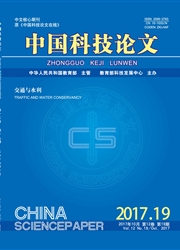

 中文摘要:
中文摘要:
以水坑尾街作为澳门的典型交通环境,大潭山作为背景点,采用GC/MS测定了澳门2010年1月和2010年5月澳门水坑尾街和大潭山细颗粒物(PM2.5)中12种优先控制的多环芳烃(PAHS)含量,并用特征化合物比值法解析了PAHS的来源,并分析了澳门地区PAHS浓度季节性变化和昼夜变化的原因。监测期间澳门水坑尾街PAHS平均质量浓度3.61 ng/m3,显著高于作为背景点的大潭山(1.69 ng/m3)。另外水坑尾街和大潭山浓度季节性变化突出(夏季〈冬季),这与颗粒物的长距离输送有密切关系,其中水坑尾街季节性变化水平(下降20.4%)明显低于大潭山(下降64.4%)。研究还表明水坑尾街4环以上PAHS白天浓度显著高于夜间,其主要原因应该来自于机动车排放,而大潭山PAHS昼夜浓度基本持平。
 英文摘要:
英文摘要:
Twelve polycyclic aromatic hydrocarbons(PAHS) were identified by GC/MS in the PM2.5 samples which were collected near a major road(Rua do Campo Road) and a background site(Tai Tam Mountain) in Macau in January and May 2010.Molecular diagnostic ratio method was used to find the major sources of the PAHS pollution,and the seasonal and diurnal variations of PAHS concentration were further explored.During the monitoring period,the average concentration of the total PAHS near Rua do Campo Road was 3.61 ng/m3 while lower concentrations were observed at Tai Tam Mountain(1.69 ng/m3).Clear seasonal variation of much lower concentration in summer than in winter was identified,which was closely related to long distance transportation of particulate from North.The reduction in PAH concentration from winter to summer near Rua do Campo Road was 20.4%;while much greater reduction in PAH concentration at Tai Tam Mountain was found(64.4%).We also found that the concentrations of 4-ring and 5-ring PAHS were higher in the daytime than in the nighttime near Rua do Campo Road,which was primarily attributed to the vehicle emissions.However,at Tai Tam Mountain such diurnal varaition is not clear.
 同期刊论文项目
同期刊论文项目
 同项目期刊论文
同项目期刊论文
 期刊信息
期刊信息
